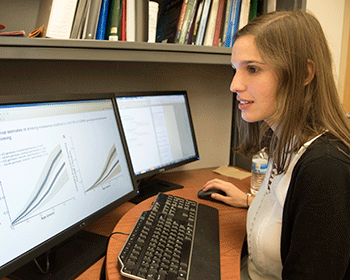
Among more than 1,500 adolescents who had consumed at least one drink before age 18, researchers have found that although a gene variant prevents some young drinkers from developing alcohol problems, the gene’s protective effects can vanish in the presence of other teens who drink.
The study, by investigators at Washington University School of Medicine in St. Louis, is published online Sept. 23 in the journal Alcoholism: Clinical & Experimental Research.
Previous research has shown that a variant of a gene involved in metabolizing alcohol reduces the likelihood that a person will develop drinking problems. Acetaldehyde is a product of alcohol metabolism that can be toxic at high levels.
People who have the gene variant make more acetaldehyde when they drink, leading to unpleasant effects, such as headaches and vomiting. Consequently, those with the gene variant may be less eager to drink and, therefore, less likely to develop alcohol problems.
But in the new study, the researchers found that when adolescents with the gene variant spend time with friends who drink, they tend to join in the drinking, and the gene variant’s protective effects disappear.
“Young people with this protective variant in the alcohol dehydrogenase gene, ADH1B, had a lower risk of becoming intoxicated and developing early symptoms of alcohol use disorder,” said first author Emily Olfson, an MD/PhD student doing research in the Department of Psychiatry. “But when in a high-risk environment — that is, if they reported that ‘most or all’ of their best friends drank alcohol — the gene’s protective effect essentially disappeared.”
The participants are part of a national study called the Collaborative Study on the Genetics of Alcoholism (COGA), a nine-center effort that began in 1989. Researchers involved in the study gathered blood samples and conducted interviews with people from families affected by alcoholism and, for comparison, from families unaffected by alcohol problems.
In recent years, subjects ages 12 to 22 have been recruited into the study and followed to learn more about genetic and environmental factors that protect some people and put others at risk for alcohol problems. One of COGA’s principal investigators is Laura Jean Bierut, MD, the Alumni Endowed Professor of Psychiatry at Washington University.
By focusing on the development of alcohol problems, it may be possible to prevent them, Bierut said. The age at which adolescents begin drinking alcohol is a key influence on alcohol consumption later in life. A person’s age at the time he or she consumes that first drink can help predict the risk for problems down the road.

“By the age of 17, most adolescents have consumed alcohol, and about 15 percent already meet the criteria for alcohol abuse,” Bierut said. “When we compare people who begin drinking at age 21 or older to those who begin drinking at age 14 or younger, we find that the risk for younger drinkers is nearly twice what we see in those who don’t start drinking until they’ve reached legal age.”
The adolescents with the protective gene variant were no more likely than others to wait until they were older to take their first drinks, but they were less likely to progress to problem drinking.
“When people with this gene variant drink, they feel bad, which limits the amount of alcohol they consume,” said Olfson.
Some medications used to treat alcoholism target the same pathway that the gene influences, making alcoholics and problem drinkers who take the drugs feel bad when they consume alcohol. In this study, the young people with the protective gene variant often did not drink to intoxication or develop alcohol problems — unless their friends were drinkers.
“There is an important interplay between genes and environment here,” Olfson said. “And this study demonstrates that a high-risk social environment can overwhelm the protective effects of a certain genetic variant.”
And since drinking patterns established in adolescence have an enormous influence on alcohol use and abuse throughout life, the investigators believe it is important for teens to reduce interactions with peers who drink alcohol.
“It is vital to reduce adolescent drinking, and although it clearly overrides the protective effect of the ADH1B gene, peer drinking is a modifiable environmental risk factor,” Bierut said. “If we look at something like smoking, we’ve done a good job over the last few decades of informing people that smoking is bad for your health. As a result, there has been a decrease in smoking initiation rates among adolescents. It’s important that we try to do the same things with alcohol.”
This work was funded by the National Institute on Alcohol Abuse and Alcoholism (NIAAA) and the National Institute on Drug Abuse (NIDA). NIH grant numbers U10AA008401, T32GM07200, UL1TR000448, TL1TR000449, K02DA042573, R21AA021235 and K02AA018755.
Olfson E, Edenberg HJ, Rice J, Goate A, Bierut LJ, et al. An ADH1B variant and peer drinking in progression to adolescent drinking milestones: evidence of a gene-by-environment interaction. Alcoholism: Clinical & Experimental Research, Early View. http://onlinelibrary.wiley.com/journal/10.1111(ISSN)1530-0277/earlyview. Published online Sept. 23, 2014.
Washington University School of Medicine’s 2,100 employed and volunteer faculty physicians also are the medical staff of Barnes-Jewish and St. Louis Children’s hospitals. The School of Medicine is one of the leading medical research, teaching and patient-care institutions in the nation, currently ranked sixth in the nation by U.S. News & World Report. Through its affiliations with Barnes-Jewish and St. Louis Children’s hospitals, the School of Medicine is linked to BJC HealthCare.